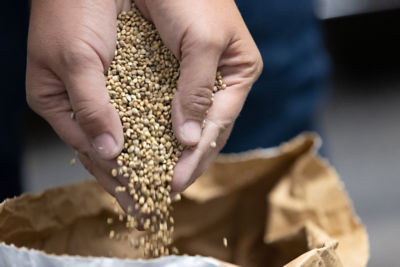Causal Agent
Cucumber green mottle mosaic virus (CGMMV)
Kyuri green mottle mosaic virus (KGMMV)
Zucchini green mottle mosaic virus (ZGMMV)
Mechanically transmitted with no known insect vectors.
Distribution
CGMMV: Australia, Canada, China, Europe, India, Iran, Israel, Japan, Korea, Lebanon, Myanmar, Pakistan, Saudi Arabia, Sri Lanka, Russia, Syria, Taiwan, Turkey, and USA (California)
ZGMMV and KGMMV: Korea
Symptoms
CGMMV affects bottle gourd, cucumber, squash, melon and watermelon and is particularly severe in protected culture. Early symptoms manifest as vein-clearing and crumpling of young leaves. Mature leaves may become bleached. Symptoms vary and include mild to severe leaf distortion, light and dark green mottling, yellow or silver leaf flecks and stunting. Symptoms on fruit may include spots or streaks, which may be chlorotic or silver, and fruit distortion. Symptoms may be especially severe on cucumber.
 Watermelon fruit infected with Cucumber green mottle mosaic virus. Note cavities inside fruit flesh. (Courtesy of Laixin Luo)
Watermelon fruit infected with Cucumber green mottle mosaic virus. Note cavities inside fruit flesh. (Courtesy of Laixin Luo)
 Cucumber green mottle mosaic virus symptoms on bottle gourd.
Cucumber green mottle mosaic virus symptoms on bottle gourd.
Conditions for Development
CGMMV is a seed-transmitted virus. Other sources of infection include contaminated crop debris and infected rootstocks. CGMMV is mechanically transmitted via equipment and workers. No insect vectors are known. Symptom expression in plants is most severe under cool, low-light conditions. High temperatures tend to enhance fruit symptom expression.
Control
Use tobamovirus-free seed and rootstocks, rogue infected plants and implement good sanitation practices to manage these diseases.



